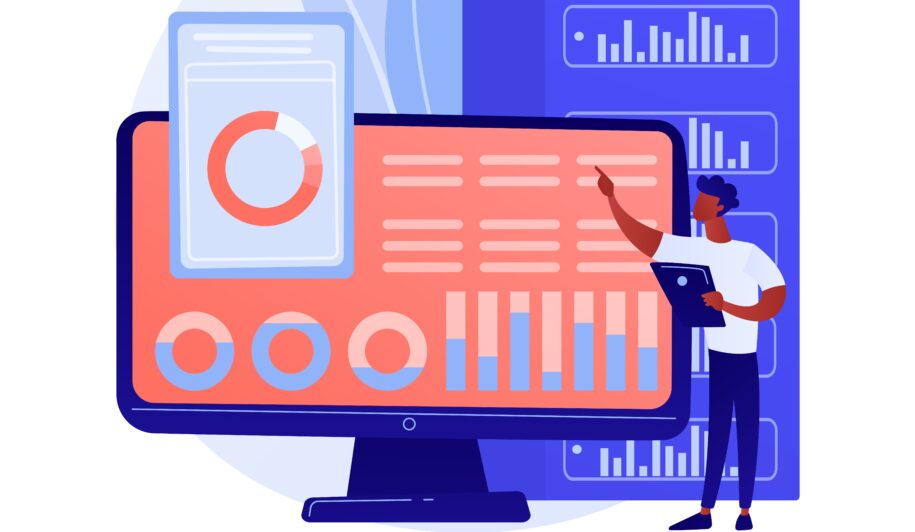In the iGaming industry, user retention and acquisition directly impact profitability. Therefore, companies are increasingly using data-driven strategies to maximize their efforts. By leveraging sophisticated data analytics, iGaming operators can craft targeted marketing campaigns, personalize user experiences and predict player behavior. In this article, inplaySoft will explain how data-driven player acquisition works in iGaming and the main data sources for it.
What is Data-Driven Player Acquisition?
Data-driven player acquisition refers to the use of data and analytics to identify, attract and engage potential players more effectively. Rather than relying on generic marketing tactics, iGaming companies use insights from various data sources to create precise and scalable acquisition strategies. The goal is to optimize every touchpoint in the customer journey, ensuring that they target the right players with the right offers at the right time.

In the iGaming industry, player acquisition involves marketing, technology and analytics to reach potential players and guide them through the funnel of awareness, interest, decision and action – the AIDA model.
Data Sources for Player Acquisition
Data-driven player acquisition starts with gathering insights from various sources. These sources provide a holistic understanding of the behavior and preferences of potential players. The most common ones include:
- Website and App Analytics
Tracking user behavior on websites and mobile apps is crucial. By analyzing metrics like session duration, bounce rate and page views, operators can gauge the effectiveness of their landing pages, user interface and content. This data helps optimize player journeys and enhances the chances of conversion.
- Player Demographics
Player demographic data, such as age, gender, location and income level, allows operators to segment their audiences more effectively. By understanding the makeup of potential players, iGaming companies can design campaigns that appeal directly to specific groups and ensure that they focus their marketing resources on the most promising leads.
- Customer Relationship Management (CRM) Systems
CRM systems provide profiles of players, including their sign-up dates, deposit history, gameplay preferences and customer service interactions. Analyzing CRM data can help identify patterns of behavior, which allows for personalized marketing approaches that increase Player Lifetime Value (LTV).
- Third-Party Data
In addition to first-party data, iGaming operators often leverage third-party data sources, such as social media platforms, ad networks and other external providers. This data helps expand the reach of campaigns by targeting audiences based on their interests, online behavior and engagement with similar products or services.
- Behavioral Data and Predictive Analytics
The use of machine learning algorithms and predictive analytics tools allows operators to anticipate player behaviors, such as the likelihood of churn or the potential for making a high-value deposit. By analyzing historical data and applying predictive models, iGaming companies can proactively tailor their acquisition strategies to attract the most valuable players.
Segmentation and Personalization
After gathering data from various sources, the next step is segmentation. Data-driven player acquisition relies heavily on segmenting players into distinct groups based on their preferences, behavior, demographics and other key characteristics. These segments can then be targeted with personalized marketing messages, offers and incentives.
- Player Persona Development
Using demographic and behavioral data, iGaming companies can develop player personas. These personas are representations of ideal players, which allows operators to understand who they are targeting, what motivates them, and how they make decisions. This approach ensures that marketing efforts are highly tailored to the needs and desires of specific player segments.
- Personalized Marketing Campaigns
Once companies identify player segments, they can design marketing campaigns that resonate with each group. For instance, a high-roller persona might receive offers with larger bonuses or VIP-level treatment, while a casual player might get free spins or smaller rewards to enhance their gaming experience.
Personalized marketing can also extend to communication channels. Some players may respond better to email marketing, while others might prefer in-app notifications or social media ads. Data-driven player acquisition ensures that operators use the right channels to engage each segment in the most effective way.
Optimization of Marketing Channels
Data-driven player acquisition goes beyond just segmentation and personalization. iGaming operators use data analytics to continuously monitor and optimize the performance of different marketing channels. These channels can include digital ads, influencer marketing, search engine optimization (SEO), content marketing, email campaigns and affiliate marketing.
- Paid Media Campaigns
Through paid media campaigns, iGaming operators can target new players by bidding on specific keywords, demographics or behaviors that align with their player personas. By leveraging data, operators can continuously test and refine their ad creatives, targeting criteria and budget allocation to ensure optimal return on investment (ROI). Data from these campaigns allows operators to identify high-converting keywords and audience segments, which ensures they are investing in the most effective channels.
- Affiliate Marketing
Affiliate marketing is a popular channel for iGaming operators to expand their reach. Affiliates, typically website owners or influencers, promote the operator’s platform in exchange for commissions based on sign-ups or player activity. By tracking affiliate performance through data, iGaming companies can identify the most effective affiliates and focus their efforts on the partners that bring in high-value players.
- SEO and Content Marketing
Search engine optimization (SEO) and content marketing strategies are crucial for increasing organic traffic to iGaming websites. By analyzing search trends, user intent and content performance, operators can optimize their content and website structure to rank higher in search engine results. Targeted content, such as blogs, reviews and game guides, can attract the right players and drive traffic to the platform.
Retention and Lifetime Value Optimization
Data-driven player acquisition doesn’t end once a player signs up. In fact, player retention and lifetime value (LTV) are just as crucial. Operators use data analytics to track players’ behaviors after they join the platform, including their activity patterns, deposit history and churn likelihood.
- Player Retargeting
Using insights from player activity, iGaming operators can retarget players who may have dropped off or become less engaged with the platform. Retargeting campaigns often involve sending personalized offers or re-engaging players with new games and promotions to encourage them to return.
- LTV Prediction Models
By analyzing player behavior data, iGaming companies can predict the potential LTV of each player. This allows them to allocate marketing resources more effectively, focusing on acquiring and retaining players who are likely to generate the highest long-term value. LTV prediction models can also identify early signs of churn, which allows operators to take proactive steps to retain high-value players.
AI and Machine Learning in Player Acquisition
Artificial intelligence (AI) and machine learning are at the forefront of data-driven player acquisition strategies in iGaming. These technologies allow operators to process vast amounts of data quickly, identify patterns and make real-time adjustments to campaigns.
AI can enhance player acquisition by:
- Predicting player behavior;
- Optimizing marketing campaigns based on real-time performance data;
- Personalizing user experiences dynamically, such as recommending games based on past play history;
- Automating customer support through chatbots.
Reflexiones finales
In the competitive world of iGaming, data-driven player acquisition is a powerful tool that allows operators to target, engage and retain players more efficiently. By collecting and analyzing data from a variety of sources, segmenting players into distinct groups and personalizing marketing strategies, operators can ensure they are attracting the right players and offering them the most relevant experiences. As technology advances and more data tools become available, data-driven player acquisition will continue to be a cornerstone of successful iGaming strategies.

